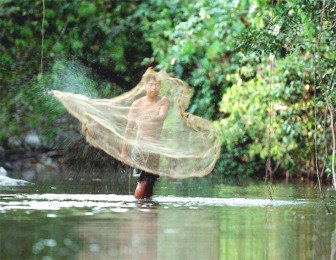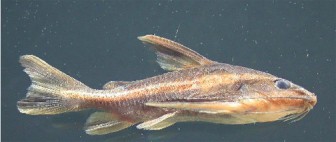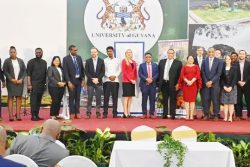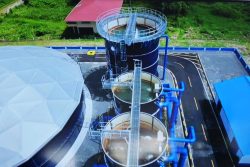The waterways within and around the Iwokrama Forest are home to an extremely high diversity of fish. So far, 420 species have been identified and what makes this exceptional is that this figure is exceedingly high seeing as only a small portion of the rivers have been surveyed. This has led to estimates of up to 600 species for the area. In comparison, there are only 700 species of fish in all of North America. For an area its size it is possible that the Iwokrama forest has the world’s highest fish diversity.
![]() Two factors potentially cause this elevated diversity. The first factor is the wide range of habitats represented within the area. Here, fish have a huge choice of habitats offering opportunities for speciation including flooded forests and savannahs, rivers, creeks, ponds and ox-bow lakes. The second factor is that the Essequibo River is situated between three major ichthyofaunal regions: the Orinoco, eastern Guiana Shield, and Amazon.
Two factors potentially cause this elevated diversity. The first factor is the wide range of habitats represented within the area. Here, fish have a huge choice of habitats offering opportunities for speciation including flooded forests and savannahs, rivers, creeks, ponds and ox-bow lakes. The second factor is that the Essequibo River is situated between three major ichthyofaunal regions: the Orinoco, eastern Guiana Shield, and Amazon.
Flooding during the annual high water period enables an exchange in fish species between these three systems.

Fish highlights include the worlds largest freshwater fish, the Arapaima (Arapaima gigas), the Silver Arowana (Osteoglossum bicirrhosum), the common sport fish – Peacock Bass or Lukanani (Cichla ocellaris), the savage Red-Bellied Piranha (Pygo-centrus natteri), various freshwater stingrays, (Potamotrygon spp.), large catfish including the Piraíba or Lao Lao (Brachyplatystoma filamen-tosum), the electric eel (Electrophorus electricus) as well as many colourful aquarium fish.
Rain forests are rich in biodiversity and are home to many different plants and animals as well as indigenous communities.
Humans, even those who don’t live in the rain forest, rely on it for resources such as building materials (wood and lianas), medicine and fruits.
Rain forests also provide essential environmental services for life on earth; they create soil as well as prevent soil erosion, produce oxygen through photosynthesis, maintain clean water systems, and are a key defence against climate change.

The Iwokrama Rain Forest is 371,000 hectares, located in the heart of Guyana. Our mission is to develop strategies for conservation and sustainable development for local people in Guyana and the world at large.
We are involved in timber, tourism and training. Come and visit us in the rain forest or at http://www .iwokrama.org.







